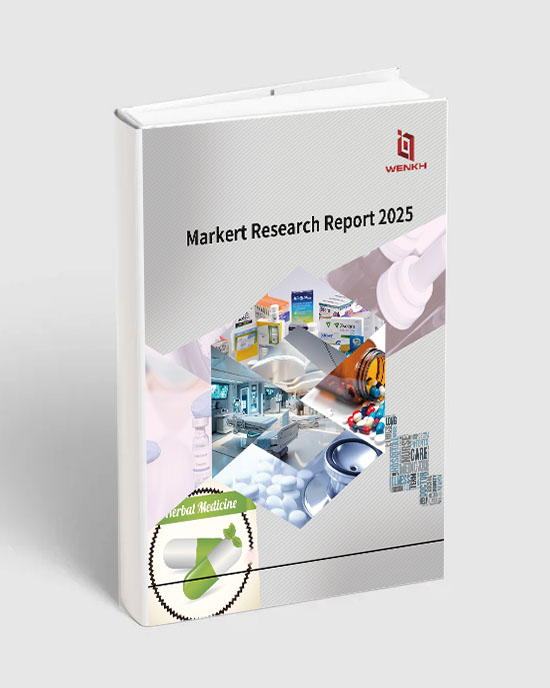
Global Distraction Osteogenesis Devices Market Competitors, Segment Types and Downstream Applications Research Report 2025



Research Summary
Distraction osteogenesis devices are medical instruments used in orthopedic and maxillofacial surgeries to gradually lengthen or reshape bones through controlled mechanical stress. This technique involves surgically cutting the bone and then applying tension to the bone segments using the distraction device. As the bone gradually heals, the device is adjusted at intervals to incrementally stretch the bone, allowing new bone tissue to form in the gap created. Distraction osteogenesis devices are employed in various procedures, including limb lengthening, correcting bone deformities, and craniofacial reconstructions. They offer a non-invasive way to achieve bone growth without the need for extensive grafting and can be customized based on the patient's needs, age, and medical condition, contributing to improved bone function and appearance.
According to WENKH research statistics, the global Distraction Osteogenesis Devices market size will reach 241.69 Million USD in 2025 and is projected to reach 328.69 Million USD by 2032, with a CAGR of 4.49% (2025-2032). Among them, the Asia-Pacific Distraction Osteogenesis Devices market is undergoing rapid changes, reaching Million USD in 2025, accounting for approximately % of the global market share. It is projected to reach Million USD by 2032.
The global Distraction Osteogenesis Devices market is highly competitive, with key market players including KLS Martin Group, Johnson & Johnson, Stryker, Zimmer Biomet, Osteomed, Ningbo Cibei Medical Treatment Appliance, Jeil Medical, Titamed, Ortho Max Manufacturing, etc. This report categorizes the competitive landscape of the global Distraction Osteogenesis Devices market into three tiers based on annual revenue, with the top three market players holding approximately % of the total market share.
This report provides an in-depth analysis of the global Distraction Osteogenesis Devices market, including market size, price trends, market status and future development prospects. It particularly focuses on the market share, product characteristics, pricing, revenue, sales volume and gross profit margin of major manufacturers in the global Distraction Osteogenesis Devices industry. Additionally, this report provides an in-depth analysis of the market status and future development trends of different segments of Distraction Osteogenesis Devices and their downstream application fields.
In terms of data coverage, this report includes extensive time-series data. Historical data spans from 2020 to 2024, providing a solid foundation for analyzing market development trends. The year 2025 is used as a base year to accurately assess the current market landscape, while forecast data extends from 2026 to 2032, using scientific analysis methods and models to offer forward-looking projections and insights into the market's future trajectory. This provides valuable reference information for industry participants and stakeholders.
The report covers countries including United States, China, Germany, Japan, France, South Korea, United Kingdom, India, Italy, Brazil, Mexico, Indonesia, Vietnam and South Africa. It particularly focuses on the revenue and sales volume of Distraction Osteogenesis Devices in these countries, as well as the product segmentation and downstream application market size of each country. The report provides an in-depth analysis of the regional distribution and future development trends of the Distraction Osteogenesis Devices market. By considering local policies, this report evaluates the market prospects of Distraction Osteogenesis Devices in each country, aiming to help companies gain a comprehensive understanding of the industry characteristics and development potential in different regions, optimize regional business layout, and develop precise market strategies to achieve global development goals.
This report places significant emphasis on data quality and reliability, leveraging a wide range of data sources to ensure accuracy and validity. Primary data collection is conducted through multiple channels, including in-depth interviews with senior corporate executives, industry experts, supply chain participants, and end consumers. This helps to gain insights into corporate strategic planning, industry policies, supply chain dynamics, and user experiences. Secondary data sources cover an extensive range, including authoritative government statistics, customs databases, industry related reports, third-party paid databases, investment research reports, academic studies, corporate financial statements, real-time media updates, and information from international organizations, all of which serve as a solid foundation for data verification and analysis.
Companies Covered
KLS Martin Group
Johnson & Johnson
Stryker
Zimmer Biomet
Osteomed
Ningbo Cibei Medical Treatment Appliance
Jeil Medical
Titamed
Ortho Max Manufacturing
Product Segment
Internal Distractors
External Distractors
Product Application
Hospitals
Orthopedic Clinics
Chapter Scope
Chapter 1: Product Statistical Scope, Product Segmentation Types and Downstream Applications, Overall Market Size, Current Status and Development Prospects
Chapter 2: Global Distraction Osteogenesis Devices Industry Chain Analysis
Chapter 3: Global Distraction Osteogenesis Devices Industry Environment Analysis and Porter's Five Forces Analysis
Chapter 4: Analysis of the Competitive Landscape of Major Companies in the Global Distraction Osteogenesis Devices Market (Market Share, Product Revenue and Sales Volume Comparison, Tier Division, Corporate Expansion and M&A Trends)
Chapter 5: Analysis of Global Major Companies (Company Profiles, Product Specifications and Features, Product Revenue, Product Sales Volume, Product Average Price and Product Gross Profit Margin)
Chapter 6: Global Distraction Osteogenesis Devices Market Analysis by Countries, Product Segment and Downstream Application (Sales Volume, Revenue and Average Price)
Chapter 7: United States Distraction Osteogenesis Devices Market Size, Product Segment, Downstream Application Analysis (Sales Volume, Revenue and Average Price)
Chapter 8: China Distraction Osteogenesis Devices Market Size, Product Segment, Downstream Application Analysis (Sales Volume, Revenue and Average Price)
Chapter 9: Germany Distraction Osteogenesis Devices Market Size, Product Segment, Downstream Application Analysis (Sales Volume, Revenue and Average Price)
Chapter 10: Japan Distraction Osteogenesis Devices Market Size, Product Segment, Downstream Application Analysis (Sales Volume, Revenue and Average Price)
Chapter 11: France Distraction Osteogenesis Devices Market Size, Product Segment, Downstream Application Analysis (Sales Volume, Revenue and Average Price)
Chapter 12: South Korea Distraction Osteogenesis Devices Market Size, Product Segment, Downstream Application Analysis (Sales Volume, Revenue and Average Price)
Chapter 13: United Kingdom Distraction Osteogenesis Devices Market Size, Product Segment, Downstream Application Analysis (Sales Volume, Revenue and Average Price)
Chapter 14: India Distraction Osteogenesis Devices Market Size, Product Segment, Downstream Application Analysis (Sales Volume, Revenue and Average Price)
Chapter 15: Italy Distraction Osteogenesis Devices Market Size, Product Segment, Downstream Application Analysis (Sales Volume, Revenue and Average Price)
Chapter 16: Brazil Distraction Osteogenesis Devices Market Size, Product Segment, Downstream Application Analysis (Sales Volume, Revenue and Average Price)
Chapter 17: Mexico Distraction Osteogenesis Devices Market Size, Product Segment, Downstream Application Analysis (Sales Volume, Revenue and Average Price)
Chapter 18: Indonesia Distraction Osteogenesis Devices Market Size, Product Segment, Downstream Application Analysis (Sales Volume, Revenue and Average Price)
Chapter 19: Vietnam Distraction Osteogenesis Devices Market Size, Product Segment, Downstream Application Analysis (Sales Volume, Revenue and Average Price)
Chapter 20: South Africa Distraction Osteogenesis Devices Market Size, Product Segment, Downstream Application Analysis (Sales Volume, Revenue and Average Price)
Chapter 21: Research Conclusion
Chapter 22: Methodology and Data Source
Purpose and Value of the Report
Market Trend Insights: Analyze industry trends, market dynamics, and future growth potential to help companies forecast changes and develop strategic plans.
Competitive Landscape Analysis: Understand key players' revenue segmentation, strategies, market share, and business models to guide competitive decisions.
Investment Decision Support: Provide feasibility analysis through market size, growth rate, demand trends, and potential risks for informed investment decisions.
Target Customer and Demand Analysis: Examine consumer behavior, purchasing preferences, and pain points to optimize products and improve market penetration.
Policy and Regulatory Insights: Interpret relevant industry policies to ensure compliance and mitigate regulatory risks.
Business Model Optimization: Offer data-driven suggestions for enhancing business models and improving profitability.





